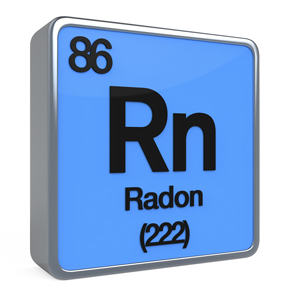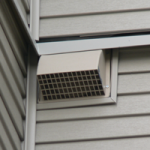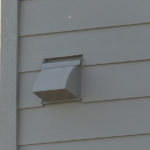 November has been declared Radon Action Month in Canada. What is Radon? In case you didn’t know, it’s one of the most dangerous carcinogens we can get exposed to.
November has been declared Radon Action Month in Canada. What is Radon? In case you didn’t know, it’s one of the most dangerous carcinogens we can get exposed to.
Where does Radon come from? It’s a naturally occurring radioactive gas that is formed during the radioactive decay process of uranium and thorium. These are the two most common radioactive elements and as they decay they change into radium, which in turn becomes radon gas.
Radon is found in many areas of Canada and the U.S.A. It becomes a problem when homes are built on top of, or close to bedrock in those areas.
When this gas is inhaled it’s the second most common cause of lung cancer after smoking and the most common cause among non-smokers. The chance of lung cancer increases when radon decays further into radon ‘daughters’ – a solid that can coat dust that when inhaled sticks to the insides of the lungs.
Radon is difficult to detect as it is colourless, odourless and tasteless. It can seep into a home through the basement, crawlspace or slab. It is the heaviest known gas, being nine times denser than air so will remain trapped in poorly ventilated basements and crawlspaces. It can be a particular problem anywhere that is underground such as mines and parking lots. It is also water soluble so can be present in groundwater.
A report by Health Canada states that 1 in 20 homes in Ontario have dangerous amounts of radon, combine that with a recent study conducted by the Canadian Cancer Society and you will see how potentially exposed the public is. In that study, 1,000 homes with basements in Ontario were surveyed with one or more children under 18. The intention was to find out how much time the occupants spent in areas susceptible to radon contamination.
The study found 40 per cent of children spent three hours or more in the basement and 14 per cent had bedrooms on the ground floor or basement. When outside the home, 20 per cent of them spent at least three hours in basements or ground level rooms.
Fortunately testing for radon is fairly simple and kits are available or professionals can be contracted. Health Canada recommends testing for at least three months to ensure an accurate reading. If the results show levels higher than 200 becquerels (Bq) it’s time to take action.
How venting can reduce Radon
The main solution is to get the radon gas out of the building. This can be done by employing suction or ventilation. The main suction method is called active sub-slab suction. One or more holes are drilled through the concrete slab into the ground. A fan is installed that draws the radon gas through ductwork to an outside vent where it dissipates into the atmosphere.
Ventilation is sometimes used in crawlspaces to flush out the gas. Either active ventilation where a fan blows air out of the space or passive where a number of vents are installed to allow airflow through the crawlspace. In all cases high quality vents should be used that make a tight seal with the building envelope – remember this is a radioactive gas we’re talking about!



